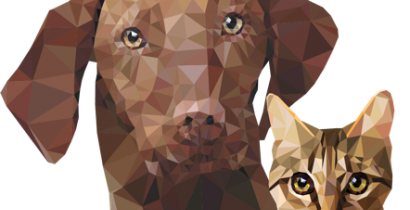Home -> Diseases -> Sand Fly-Borne Diseases -> Leishmaniosis
LEISHMANIOSIS
Leishmanioses are a group of zoonotic diseases transmitted to humans and animals by the bite of phlebotomine sand flies. The diseases are named after Sir William Boog Leishman, Director General Army Medical Services 1923-1926. Leishmanioses are caused by intracellular parasitic protozoans. Worldwide, they are one of the most important vector-borne diseases.
Two types of leishmanioses can broadly be distinguished: 1. Zoonotic leishmanioses, in which the reservoir hosts are wild animals, commensals or domestic animals and 2. Anthroponotic leishmanioses, in which the reservoir is man. Clinical manifestation of the disease depends on the type of pathogen and thus the type of leishmaniosis. It can be a life-threatening systemic infection (visceral form), go along with chronic skin sores (cutaneous form), or show dreaded metastatic complications, causing facial disfigurement (mucocutaneous form).
In the veterinary field, of all domestic animals the dog is the main reservoir for Leishmania infantum that causes a visceral human form of leishmaniasis. The dog is also the domestic animal most severely affected by the parasite itself. In countries endemic for leishmaniosis, veterinary treatment is often not affordable, whereas in areas as the Mediterranean basin, diseased dogs represent a typical veterinary patient.
Regarding the disease in humans, an estimated number of over 1 billion people are living in endemic areas at risk of infection according to the WHO, with 600,000 to 1 million new cases of cutaneous and 50,000 to 90,000 new cases of visceral leishmaniasis annually. Urbanization due to ecological, demographic and environmental changes, appears to be one of the major worldwide risk factors for leishmaniasis and largely contributes to the persistence of the burden of the disease, especially in anthroponotic foci.
Pathogens
Epidemiology
Transmission
Pathogenesis
Diagnosis
Clinical Signs
Treatment and Prevention
Situation in Cats
References & Further Reading
PATHOGENS
The genus Leishmania is divided into two subgenera on the basis of the development in sand flies, namely Leishmania and Viannia.
Most of the Leishmania species annotated to date were originally described on the basis of clinical, epidemiological and biological features. The subgenus Leishmania includes besides others medically important species of the Old World species (e.g., L. tropica, L. aethiopica, L. major, L. infantum and L. donovani) and medically important species of the mexicana group restricted to the New World (e.g., L. mexicana, L. amazonensis, L. venezuelensis). The subgenus Viannia is found only in Central and South America. Most important species are L. braziliensis, L. guyanensis, L. panamensis and L. peruviana, all of which cause human disease.
The veterinary important species are Leishmania infantum in the Mediterranean area and Leishmania chagasi, meanwhile found identical with L. infantum, in Latin America.
Leishmania infantum, the infectious agent of canine leishmaniosis (CanL), is an obligate heteroxeneous parasite, i.e. it needs two hosts to develop, one vertebrate host and one terminal insect host. In the vertebrate host the parasite is found intracellular as so-called amastigote. In the insect host L. infantum is found extracellular in the gut as promastigote.
The amastigote shows a round to oval body, about 1.5 to 3 x 3 to 6.5 µm in size, depending on the species. It possesses a single nucleus and a rod-shaped kinetoplast. There is no free flagellum, but a rudimentary one is present. The reproduction of this form is by longitudinal binary fission. Amastigotes can be cultured in appropriate cell cultures.
The promastigote varies from 16 to 40 µm length and 1.5 to 3 µm width. Promastigotes are longer than amastigotes, with a central nucleus and anterior kinetoplast and a well-developed flagellum, which is used either for propulsion or for attachment.
Promastigotes may be cultured in various media, mostly containing defibrinated blood and inactivated serum.
EXPLORE OUR CONTENT
 CVBD MapsThe CVBD Occurence World Map presents country-specific situations based on current scientific knowledge and feed-back from experts around the world in an easy-to-grasped way. |
| Read more-> |
 ResourcesElanco Animal Health supports education in parasitology and especially in the field of vector-borne diseases. Access image collections, discover the World Forum calendar, interesting links and our glossary. |
| Read more-> |
 CVBD World ForumThe CVBD World Forum is a working group of leading international experts with the mission to enhance knowledge and communication on companion animal vector-borne diseases for the improvement of animal, human, and environmental health. |
| Read more-> |
